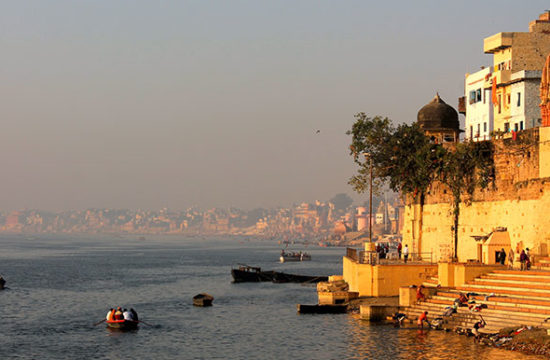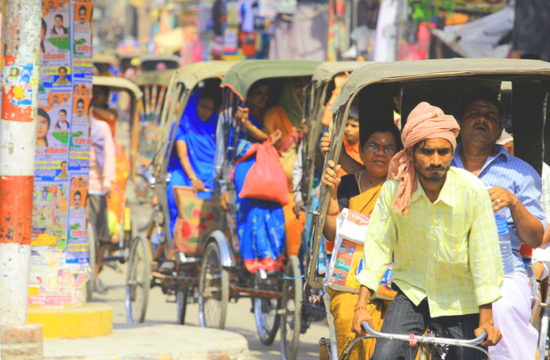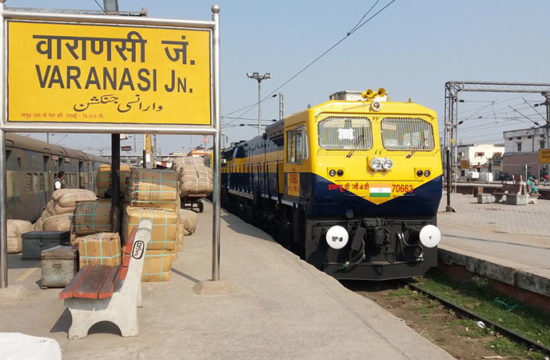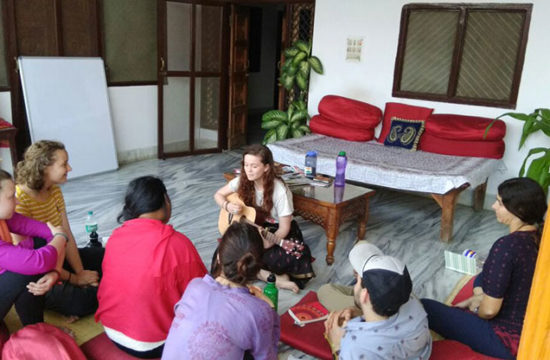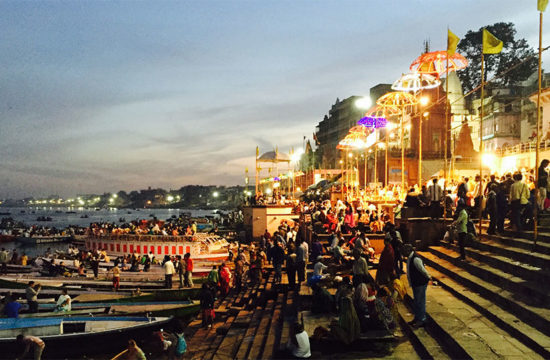Varanasi is not a city with distinct tourist destinations. The experience is in watching the spectacle of life and death on the river and meandering through the alleys of the old city.
Ghats and the River Ganges
The River Ganga is a sacred river for the Hindus and you will see traditional rituals and bathing occurring at all times of the day. On the Eastern banks, the River Ganga is flanked by a 300m wide sand belt, beyond which lies a green belt, a protected area reserved for turtle breeding. The western crescent-shaped bank of the River Ganga is flanked by a continuous stretch of 84 ghats, or series of steps leading down to the river, stretching for 6.8km. These ghats were built by Hindu kings who wanted to die along the Ganges, and they built lofty palaces along the river, most of which are now hotels, to spend their final days. You can walk along the river and see all of the ghats, but the best option for viewing the ghats is to charter a boat and see them from the river.
- Panchganga Ghat – the meeting of the five rivers
- Manikarnika Ghat – the main cremation ghat; a must-see, but remain quiet and never take photographs (note: scams are plentiful here; see the “Staying Safe” section)
- Dasaswamedh Ghat – known as the ‘main’ ghat, this is the site of the large evening aarti ceremony
- Rana Ghat
- Kedar Ghat – brightly painted in stripes and busy with bathers, very photogenic
- Narad Ghat – the ghat on which bathing with spouse is not advised because the legend of contention
- Harishchandra Ghat – the cremation place where Raja Harishchandra did the last rituals of his son.
- Hanuman Ghat
- Shivala Ghat
- Tulsi Ghat – site of the large water purification plant
- Assi Ghat – a popular place to stay, with many hotels, restaurants, and internet cafes
Religious buildings
- Alamagir Mosque, (overlooking Panchganga Ghat): a great place for a bird’s eye view of the area.
- Durga Temple:
- Gauri Matha Temple: The devi at this temple is supposed to be the sister of the lord Kashi Vishwanath. Its a tradition to visit here just before you leave Kashi. You buy sea shells at this place and offer them to God saying that the virtues of donating the shells goes to her while you keep the virtues of having visited the holy shrines in Kashi and bathing in the ganga. The trip to Kashi is expected to yield results only after completing this custom.
- Kaal Bhairav Temple: Dedicated to Kaal Bhairav, a dreaded form of the Lord in Shiva avatar symbolizing death. Its a tradition to buy a black thread (Rs. 15), sanctify it in the shrine, then wear it on the arm, wrist or around the neck as protection against evil.
- Nepali Hindu Temple, (near Lalita Ghat): A small golden temple, built in Nepali architecture
- Shri Kashi Vishwanth Temple (Golden Temple) : Security is tight making entrance difficult and sometimes completely off limits to foreigners. No bags, cellphones or pens are allowed. They can be deposited in the shops by the temple entrance. The temple was destroyed multiple times by Mughal invaders and was re-constructed by Hindu kings who followed them.
- Sankat Mochan Temple: The famous Hanuman temple, home to thousands of monkeys. Security is tight, mobile phones, keys etc. are not allowed inside the temple as a result of moslem terrorist bomb blasts; and as you enter you will be greeted by the sight of hundreds of monkeys on the premises. Beware- they may snatch from you if they see you carrying boxes or packets of food. Inside the temple you will find stacks of hanuman chalisa text for the use of devotees.
- Sarnath (10km from Varanasi): – It is believed that in Sarnath Buddha gave his first sermon to his disciples after getting enlightenment. There is also a Museum in Sarnath. The location is also known as Deer Park. Sarnath is 13 Km from Varanasi and is very peaceful. Several Asian countries have built Buddhist temples there following their own ancient architectural traditions.
- Tulsi Manas Temple:
Other sights
- Banaras Hindu University: A very green and peaceful campus. Few actually know that this University was built during the Indian freedom struggle and is known as Oxford of the East. This is the largest residential university of Asia, with 124 departments. You can also visit Bharat Kala Bhavan, a museum of Art and Archaeology inside the university. There is also a huge white marbled temple called Vishwanath Temple which was built by Pt. Madan Mohan Malviya, the founder of the university.
- Chunar Fort, (15km southwest of Varanasi): A 2,000+ year old fort.
- Man Mandir Observatory:
- Ramnagar Fort, (Located on the eastern bank of the river, opposite Tulsi Ghat):The fort of the King of Kashi. Built in 1750 in the Mughal style.
